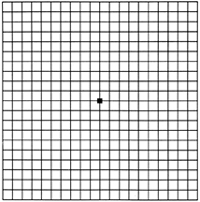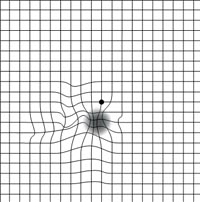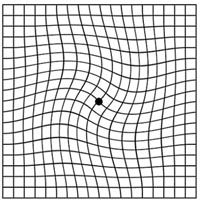The Amsler Grid is a visual assessment tool used to monitor and detect changes in vision. Individuals can perform this simple yet effective test at home to detect potential macula-related eye issues.
Maintaining our vision is integral to overall well-being, so regular eye examinations are vital, but staying aware of any changes to our vision between visits to an eye doctor is also key. An Amsler Grid Chart can provide individuals with a way of monitoring their own vision at home and identify any potential issues which require further care.



It is a simple grid pattern made up of horizontal and vertical lines, joined by small dots or fixation points in its center. Resembling a checkerboard, its purpose is to measure central visual field evaluation; specifically identifying distortions, blind spots or irregularities within vision particularly within macular regions.
It is necessary to gain an understanding of what makes up a macula and its significance for vision. A macula is a small area at the center of retina - the light-sensitive tissue at the back of eye - responsible for central vision allowing us to clearly see fine details; reading, recognising faces, and driving all rely heavily on its functionality.
It is widely utilized for vision care for various reasons:
It is an effortless process; simply follow these steps:

It can assist individuals in detecting various changes to their vision:
It can be used to monitor several eye conditions, including:
Here are a few additional strategies for maintaining good vision beyond using this eye exam:
Copyright © 2025 | Save Sight Centre | All Rights Reserved.